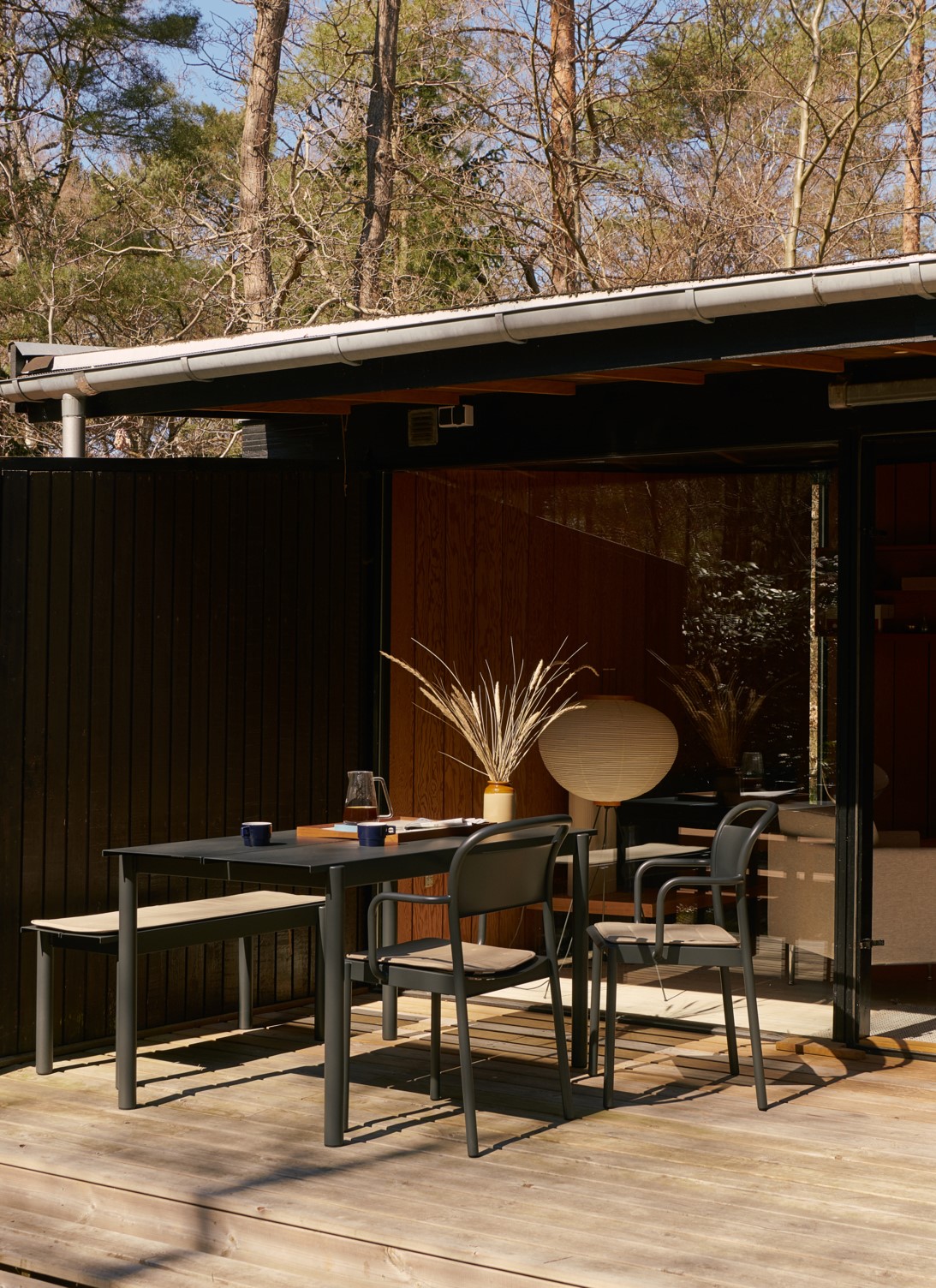
The Best Materials for Outdoor Furniture in Melbourne
In a city like Melbourne, with unpredictable weather, choosing the best material for outdoor furniture is crucial in Melbourne.
Material choice impacts furniture’s durability, upkeep, and look. Melbourne experiences both hot summers and cold winters, and that is why selecting weather-resistant and decor-complementing furniture is essential.
This blog will cover the best outdoor furniture materials for Melbourne’s homes. We’ll look at weather resistance, maintenance, style, and eco-friendliness. Whether it’s for a balcony, poolside, or garden nook, we have insights. Our recommendations aim to help you find the perfect material. We want the best quality outdoor furniture that not only lasts but also enhances your space.
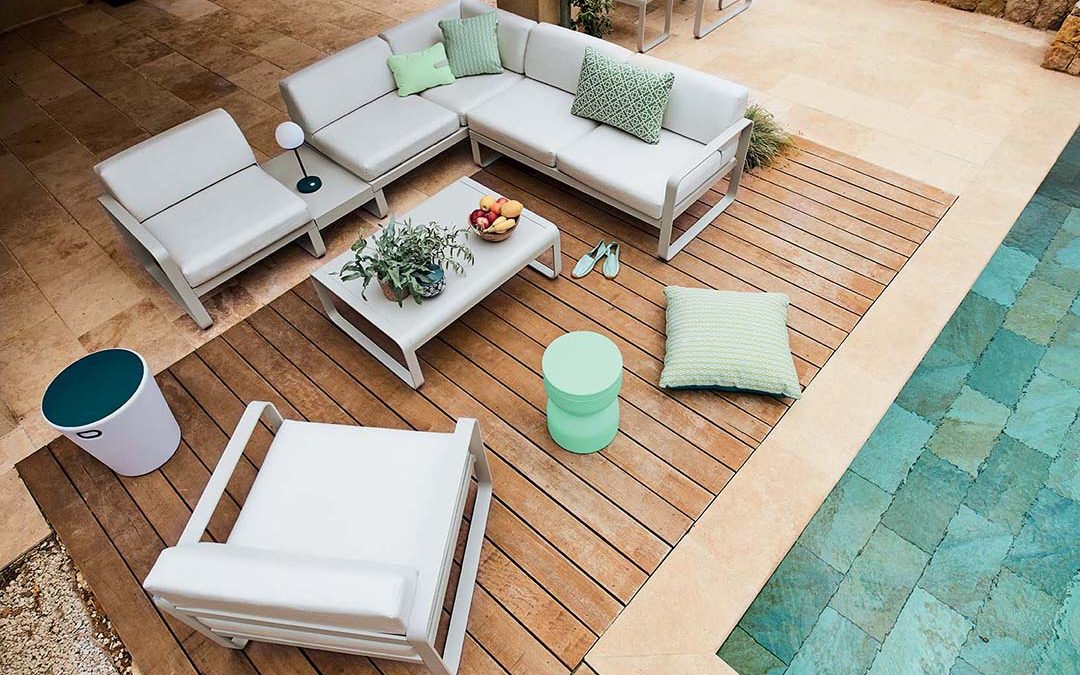
Understanding Outdoor Furniture Materials for Melbourne
Understanding different outdoor furniture materials for Melbourne is key. Each offers unique benefits and downsides. These include resistance to weather, maintenance needs, comfort, and aesthetic appeal. Some materials better withstand Melbourne’s climate. They also contribute to outdoor comfort and style. Additionally, their environmental impact varies.
Whether you’re looking for furniture that requires minimal maintenance, furniture that complements the natural beauty of your outdoor space, or eco-friendly options that help reduce your carbon footprint, a thorough understanding of the material’s properties will guide you to the best choice for your outdoor sanctuary. This knowledge ensures that your garden furniture is a worthwhile investment but also enhances the functionality of your outdoor areas.
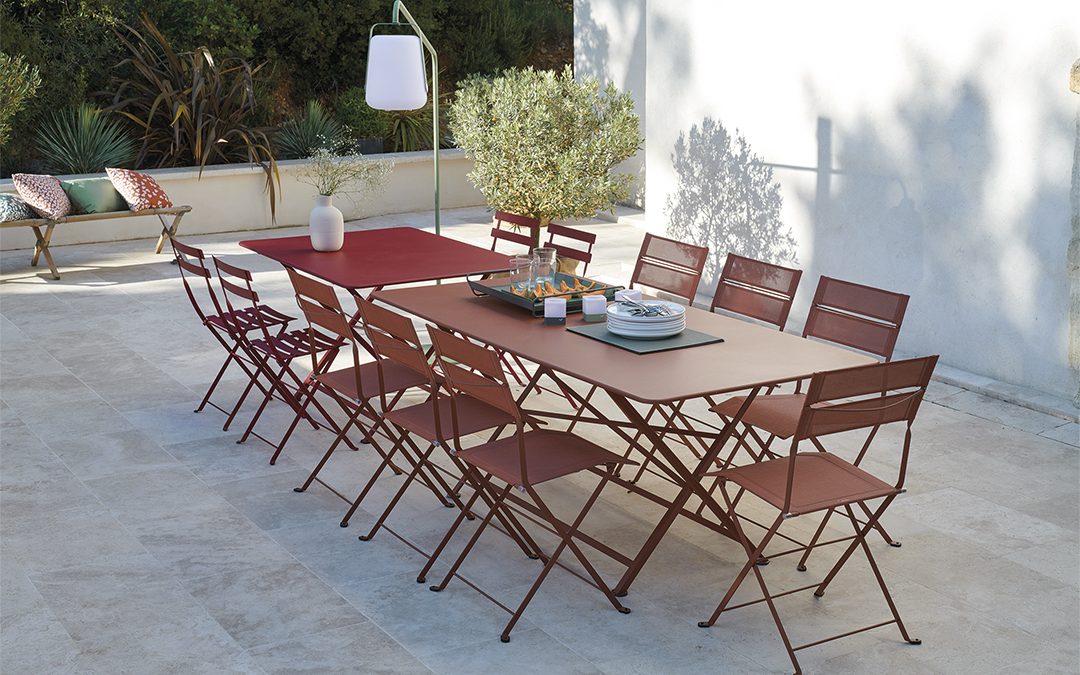
Types of Outdoor Furniture Materials
WOODEN FURNITURE
Wood is an outdoor garden furniture material that remains a popular choice for many in Melbourne, thanks to its timeless beauty and natural warmth. The best wood for outdoor furniture includes teak, cedar, and eucalyptus, each offering unique benefits and aesthetic appeal.
Teak: is highly valued as the best hardwood for outdoor furniture due to its exceptional durability and resistance to weather, insects, and rot. Its natural oils make it capable of withstanding even the harshest outdoor conditions without the need for regular treatment, making it a favourite for furniture that lasts.
Cedar: is known for its lovely aroma and natural insect-repellent properties. It’s more lightweight than teak, offering a softer wood option that still maintains a good level of resistance to decay and weathering. Cedar’s ability to resist moisture makes it a great choice for damp climates.
Eucalyptus: is a more affordable alternative with good durability and weather resistance. It’s a fast-growing, sustainable wood that requires some maintenance to retain its appearance and longevity but can be treated to achieve a look similar to more expensive woods like teak.
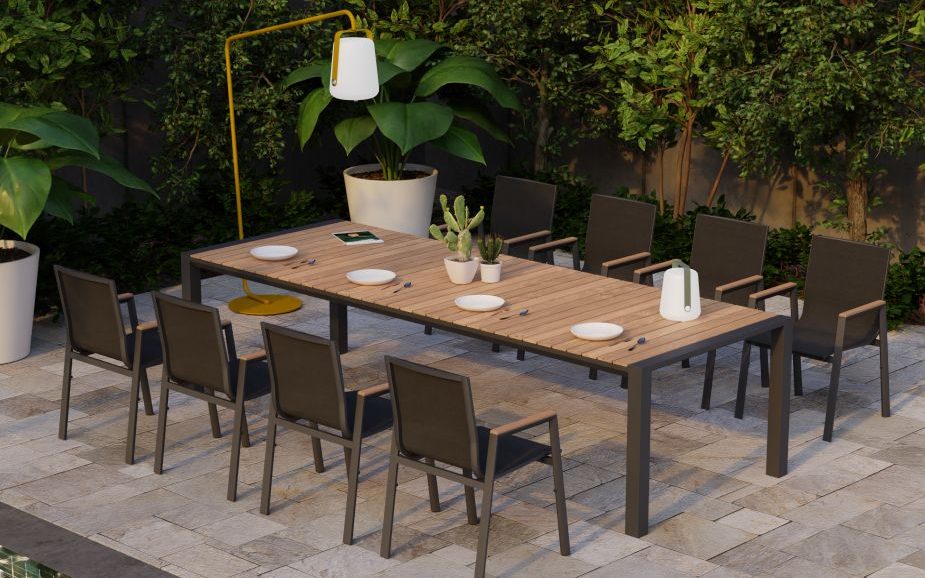
Pros of Wood
| Natural Beauty | Wood brings a warm, natural look to any outdoor space, easily blending with garden landscapes or enhancing modern outdoor settings. |
| Durability | High-quality woods like teak and cedar are known for their longevity and can withstand the elements when properly maintained. |
| Customizability | Wood can be stained or painted to match any decor, offering versatility in design choices. |
Cons of Wood
| Regular Maintenance | To preserve its appearance and durability, wood may require regular treatments, such as oiling or sealing, especially woods like eucalyptus and cedar. |
| Cost | High-quality wooden furniture, especially pieces made from teak, can be expensive. The initial investment, however, reflects in its durability and lifespan. |
METAL FURNITURE
Metal outdoor patio furniture is a material renowned for its strength, durability, and versatile designs. The most common outdoor furniture metals in Melbourne are aluminium, wrought iron, and stainless steel.
Aluminium: is a popular choice for its lightweight, rust-resistant properties, making it easy to move and ideal for various weather conditions. It’s often used in modern furniture designs due to its ability to be moulded into sleek, contemporary shapes.
Wrought iron: is known for its strength and heavy-duty construction, offering timeless, classic designs often seen in ornate garden benches and intricate table settings. It lends a stately, elegant look to outdoor spaces but requires a protective coating to prevent rust.
Stainless steel: with its high resistance to corrosion and rust, is another durable option for outdoor metal furniture. It combines the strength of metal with the longevity needed for outdoor use, often featuring in more minimalist and contemporary furniture designs.
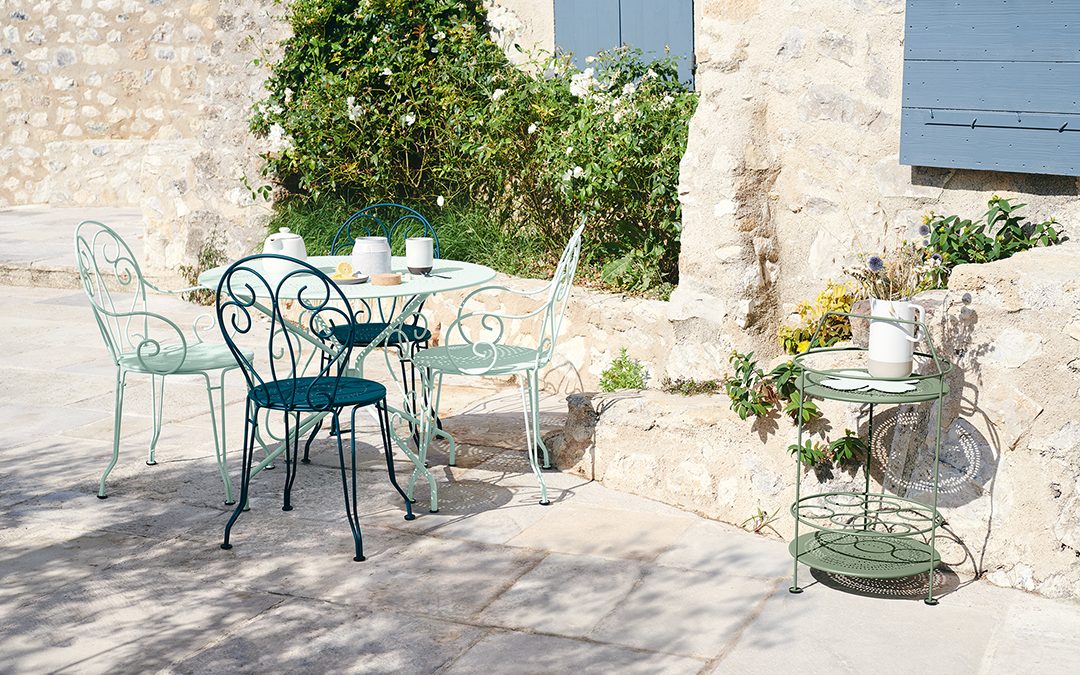
Pros of Metal
| Durability | Metal furniture is built to last, capable of withstanding heavy use and harsh outdoor conditions. |
| Style Versatility | Whether you’re aiming for a modern aesthetic with sleek aluminium or a classic garden with wrought iron, metal furniture offers a wide range of design possibilities. |
| Low Maintenance | Aluminium furniture, in particular, requires minimal upkeep due to its rust-resistant nature, making it an excellent choice for those looking for durability without the hassle. |
Cons of Metal
| Prone to Rust | Without proper treatment or regular maintenance, metals like wrought iron and certain steels can rust over time, potentially compromising their appearance and structural integrity. |
| Comfort | Metal can conduct heat and cold, making it less comfortable to the touch in extreme temperatures. Additionally, the hardness of the material often necessitates the use of cushions for added comfort during use. |
RESIN & PLASTIC FURNITURE
Outdoor plastic furniture has become increasingly popular for outdoor settings in Melbourne due to its durability, affordability, and versatility. This category includes materials such as polyethylene (PE), polypropylene (PP), and high-density polyethylene (HDPE), each offering unique benefits for outdoor use.
Polyethylene (PE): is a common form of plastic used in outdoor furniture, known for its flexibility and resistance to moisture, making it ideal for outdoor settings. It’s often used in the production of outdoor rugs, storage containers, and more.
Polypropylene (PP): is lightweight and extremely resistant to chemicals, heat, and impact, which makes it a popular choice for outdoor chairs and tables that need to withstand the rigors of outdoor life. Its resilience to fading and degradation under UV light ensures that the furniture retains its colour and integrity over time.
High-Density Polyethylene (HDPE): is a more rigid and durable option compared to PE and PP. It is often used in higher-end outdoor furniture due to its greater strength and resistance to weathering and UV damage. HDPE is also appreciated for its environmental sustainability, as it is commonly recycled.
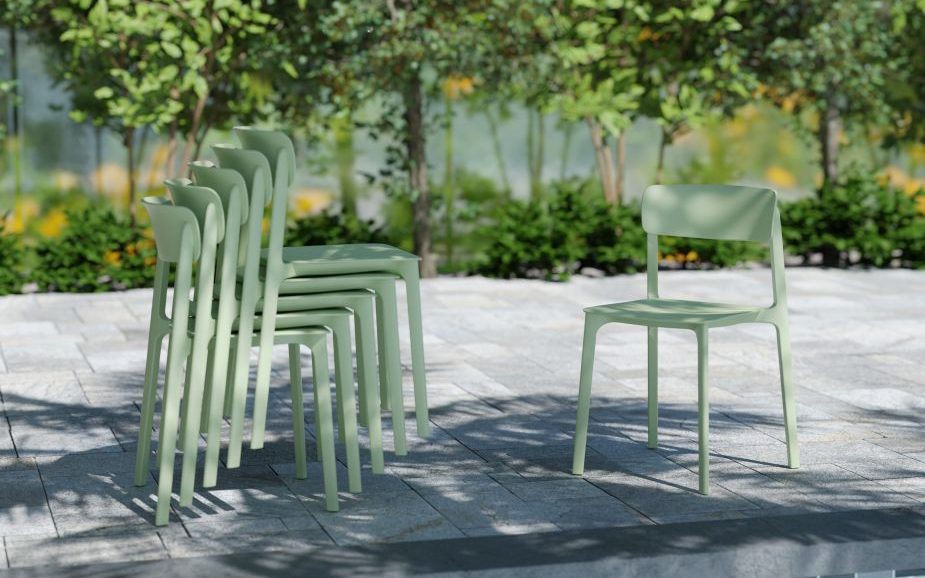
Pros of Plastic
| Lightweight | Resin and plastic furniture are easy to move and rearrange, offering flexibility in outdoor seating and decor arrangements. |
| Low Maintenance | This type of furniture requires minimal upkeep. A simple cleaning with soap and water is usually enough to keep it looking new. |
| Weather-Resistant | Resistant to moisture, UV rays, and temperature fluctuations, resin and plastic furniture is well-suited to withstand outdoor conditions without suffering damage. |
| Eco-Friendly Options Available | Particularly with HDPE, eco-friendly options are available, making it possible to choose outdoor patio furniture that is both durable and kind to the environment. |
Cons of Plastic
| Aesthetic Appeal | While modern manufacturing techniques have improved the look of resin and plastic furniture, they can still lack the natural beauty and texture of materials like wood or metal. Some may find it less appealing for sophisticated or naturalistic outdoor settings. |
Resin and plastic outdoor dining furniture offer a practical, versatile, and cost-effective solution for outdoor living spaces. With advancements in design and manufacturing, there are now more stylish options available that mimic the look of natural materials, allowing homeowners to enjoy the benefits of resin and plastic without compromising on style.
NATURAL & SYNTHETIC WICKER FURNITURE
Natural wicker: Craftsmen have used traditional materials like rattan, bamboo, reed, and willow for centuries to create various types of furniture, including outdoor pieces. This process gives it a distinctive, classic look that is highly valued in outdoor settings. Despite the development of synthetic alternatives, natural wicker maintains its popularity due to its aesthetic appeal and relatively durable nature.
Synthetic wicker: has emerged as a popular choice for outdoor furniture, offering the timeless appeal of traditional wicker with the added benefits of modern materials. Manufacturers craft synthetic wicker from resin or plastics to mimic the look and feel of natural wicker while providing superior durability and resistance to the elements.
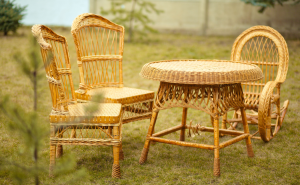
Pros of Wicker
| Durability | When well-maintained and placed in covered outdoor areas, high-quality natural wicker can be quite durable, lasting several years. |
| Weather Resistance | While wicker is not as weather-resistant as synthetic alternatives, certain types of natural wicker, when treated and cared for properly, can withstand mild outdoor conditions. |
| Classic Look | Wicker furniture offers a timeless, elegant aesthetic that synthetic materials often strive to replicate. Its classic appeal suits a variety of outdoor decor styles, from rustic to sophisticated. |
Cons of Wicker
| Quality Variance | The quality of natural wicker furniture can vary greatly depending on the source and the construction process. Lower-quality pieces may not be as durable or weather-resistant as higher-end options. |
| Cost | Due to the manual labour involved in weaving and the quality of the materials used, natural wicker furniture can be quite expensive. The cost is often a reflection of the craftsmanship and the durability of the material. |
| Maintenance | Natural wicker requires regular maintenance to retain its appearance and longevity. It needs to be cleaned gently and protected from excessive moisture and direct sunlight, which can cause fading, drying out, and brittleness. |
Natural and synthetic wicker remains a coveted choice for outdoor garden furniture due to its unique beauty and traditional appeal. Although natural wicker may need more care and investment than some synthetic materials, its unmatched aesthetic and tactile qualities make it a preferred option for many. It helps create inviting and stylish outdoor living spaces.
CONCRETE FURNITURE
Concrete is the best weatherproof outdoor furniture in Melbourne and has surged in popularity, especially among those seeking a sleek, modern aesthetic for their outdoor spaces. Known for its stark, minimalist look, concrete furniture can range from benches and tables to decorative planters and fire pits. This material’s versatility in design and texture offers a contemporary appeal that complements a variety of outdoor styles, from urban chic to rustic modern.
People celebrate it for its structural solidity and ability to withstand the elements, making it an excellent choice for permanent outdoor installations. Its raw, textural quality adds a unique visual element to gardens and patios, blending well with both green landscapes and architectural features.
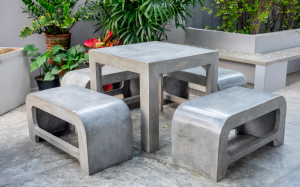
Pros of Concrete
| Modern Look | Concrete outdoor patio furniture is at the forefront of modern outdoor design, offering clean lines and a sophisticated, urban appeal that can elevate the style of any outdoor area. |
| Extremely Durable | Concrete is known for its exceptional durability. It can withstand a wide range of weather conditions, from intense sun to freezing temperatures, without showing significant wear. |
| Weather-Resistant | The inherent qualities of concrete allow it to resist most outdoor elements, including rain, wind, and sun, maintaining its integrity over many years. |
Cons of Concrete
| Heavy | One of the most significant drawbacks of concrete furniture is its weight. Once positioned, it’s difficult to move, making it less ideal for those who like to frequently rearrange their outdoor spaces. |
| Special Cleaning Products | Concrete can require special cleaning products to remove stains and maintain its appearance. Acidic or harsh chemicals can damage the surface, so it’s important to use products designed specifically for concrete. |
| Cost | The manufacturing process of concrete furniture, along with its durability and design appeal, can make it an expensive option. Custom and designer pieces, in particular, carry a higher price tag due to the craftsmanship involved. |
Concrete outdoor patio furniture blends modern style, durability, and weather resistance. It’s ideal for statement-making outdoor spaces. Despite its weight and cost, concrete’s timeless appeal and quality offer great value. This makes it a worthwhile investment for many homeowners.
FABRIC FURNITURE
Fabric plays a crucial role in outdoor furniture, especially when it comes to cushions and upholstery. High-quality outdoor fabrics like Sunbrella have revolutionized the way we think about outdoor comfort and style, offering durability, weather resistance, and a wide range of colours and patterns to suit any design preference.
Outdoor furniture fabrics withstand harsh weather, resist UV exposure fading, and repel water. This makes them perfect for outdoor seating and accents. Brands like Sunbrella are famous for their high-performance fabrics. These fabrics merge function with style, letting homeowners craft inviting and stylish outdoor living spaces.
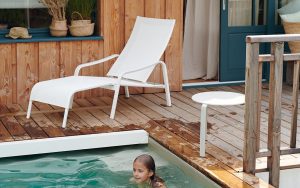
Pros of Fabric
| Comfort | Fabric cushions and upholstery significantly enhance the comfort of outdoor garden furniture, making it more inviting to spend time lounging outside. |
| Colour and Style | With an extensive variety of colours, patterns, and textures available, outdoor fabrics offer endless possibilities to personalize and style your outdoor space. |
| Water-Resistant and UV-Protected | Quality outdoor fabrics are treated to resist water and protect against fading from UV rays, ensuring that they maintain their appearance and functionality over time. |
Cons of Fabric
| Maintenance | While outdoor fabrics are designed to be durable and easy to clean, they may require more maintenance than other materials. Regular cleaning is necessary to prevent mildew and remove stains, and although many fabrics are treated to be mould and stain-resistant, care and attention are still needed. |
| Storage During Bad Weather | To prolong the life of outdoor fabric items, it’s recommended to store them during prolonged periods of bad weather or the winter season. This can be a consideration for those with limited storage space. |
Fabric adds an essential layer of comfort and style to outdoor luxury furniture, transforming patios, decks, and gardens into cozy, vibrant extensions of the home. High-quality outdoor fabrics, despite needing a bit more care and occasional storage, undeniably enhance outdoor living spaces. They offer a perfect blend of form and function, enjoyable across all seasons.
Factors to Consider When Choosing the Best Outdoor Materials
When selecting the materials for outdoor garden furniture, several critical factors come into play, influencing not only the longevity and appearance of the furniture but also its environmental impact and the amount of maintenance required. Understanding these factors ensures that the selected modern outdoor furniture meets your needs, preferences, and local climate conditions. Here’s a closer look at why each factor is important:
Durability and Weather Resistance: The Foundation of Outdoor Furniture
The essence of outdoor balcony furniture is its ability to withstand the elements. High durability and weather resistance in materials are crucial. They ensure furniture keeps its function and appearance. This matters in areas with harsh or variable weather. Materials must endure sunlight, rain, wind, and possibly snow or salt water. Choosing resilient materials prevents frequent replacements. It also keeps outdoor spaces welcoming and stylish over the years.
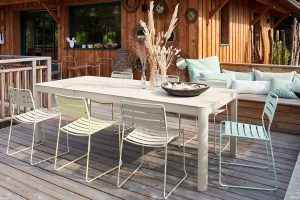
Maintenance: Balancing Upkeep with Lifestyle
The time and effort required to maintain designer outdoor furniture are significant considerations for many homeowners. Some materials require regular treatment, cleaning, and protection to maintain their appearance and durability, while others are virtually maintenance-free. Understanding the maintenance needs of different materials allows you to select options that fit your lifestyle and the amount of time you’re willing to invest in upkeep. Low-maintenance materials can be particularly appealing, offering convenience and ease of use.
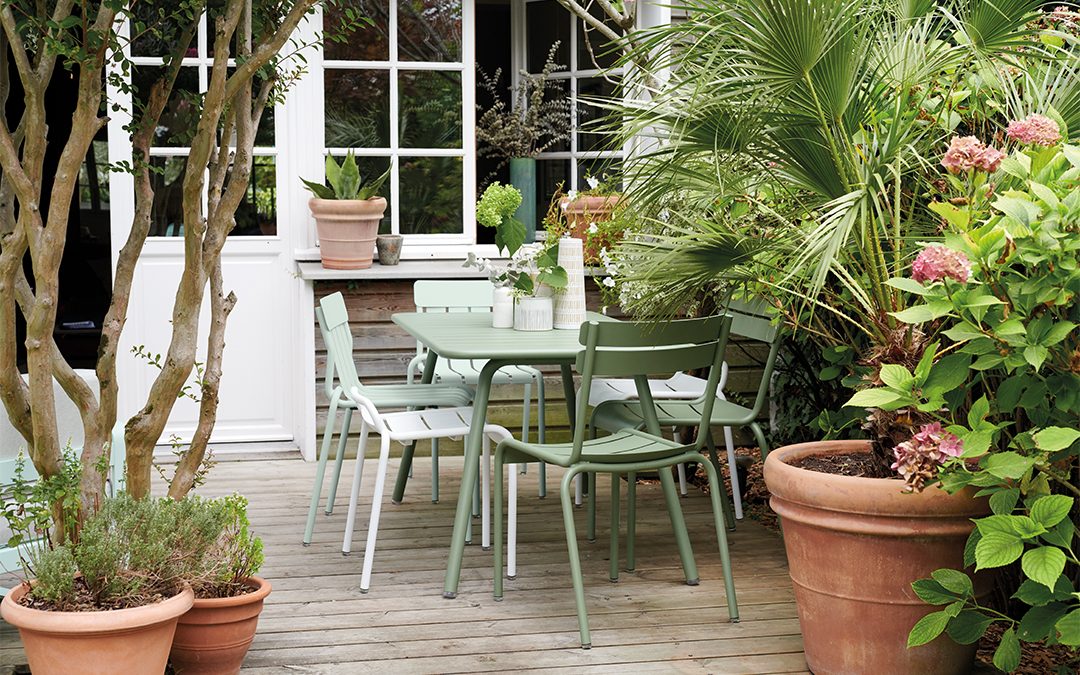
Comfort: Crafting Cosy Outdoor Retreats
Comfort is a key factor in the enjoyment of outdoor patio furniture. The material’s feel, along with the design of the furniture, can greatly influence comfort levels. For example, metal or wood furniture might require additional cushions to provide a comfortable seating experience. Considering the comfort of various materials and the potential need for accessories like cushions is important for creating an inviting outdoor space where you and your guests will enjoy spending time.
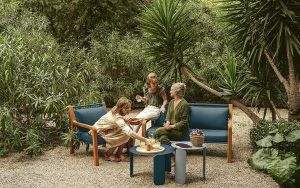
Aesthetic Appeal: Designing Your Outdoor Oasis
Outdoor lounge furniture material contributes significantly to the overall ambience of your outdoor space. Materials vary greatly in style, colour, texture, and finish, offering a range of aesthetic options to complement your home’s exterior and landscape. Whether you’re looking for a natural, rustic feel or a modern, sleek appearance, the material you choose plays a central role in achieving your desired design aesthetic. It’s important to select materials that reflect your taste and complement the design of your outdoor living area.
The look of outdoor balcony furniture greatly affects your space’s ambience. Materials offer diverse styles, colours, textures, and finishes. They match your home’s exterior and landscape. You might want a rustic feel or a sleek, modern look. Your choice of material is key to your design aesthetic. Choose materials that mirror your taste. They should also enhance your outdoor living area’s design.
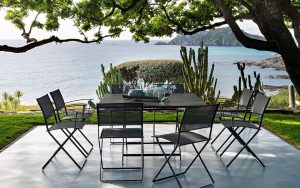
Environmental Impact: Choosing Consciously for the Planet
Increasingly, the environmental impact of outdoor garden furniture materials is a consideration for many consumers. Sustainable, eco-friendly materials can minimize your environmental footprint, contributing to the conservation of natural resources and reducing waste. Materials that are recyclable, sustainably sourced, or made from recycled content are gaining popularity among environmentally conscious individuals. Choosing such recycled plastic outdoor furniture materials supports environmental sustainability while still providing durability, style, and comfort.
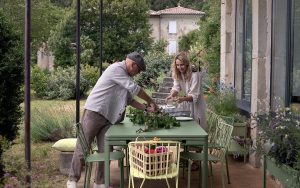
Taking these factors into account when choosing outdoor luxury furniture materials ensures a balance between practicality and personal preference, leading to a more satisfying and sustainable outdoor living experience.
Recommendations for the Best Outdoor Furniture Materials
When selecting the best material for outdoor furniture, your choice should align with your lifestyle, aesthetic preferences, and the specific demands of your outdoor space. Here are recommendations and tips to guide you in choosing the most suitable material based on different criteria:
Longest-Lasting
- Teak: Known for its exceptional durability and resistance to weather, teak is ideal if longevity is your top priority. It naturally repels water, resists decay, and can last for decades with proper care.
- High-Density Polyethylene (HDPE) Synthetic Wicker: Offers durability and weather resistance superior to other types of synthetic wicker and most natural materials. It’s designed to withstand sun, rain, and wind without fading or cracking.
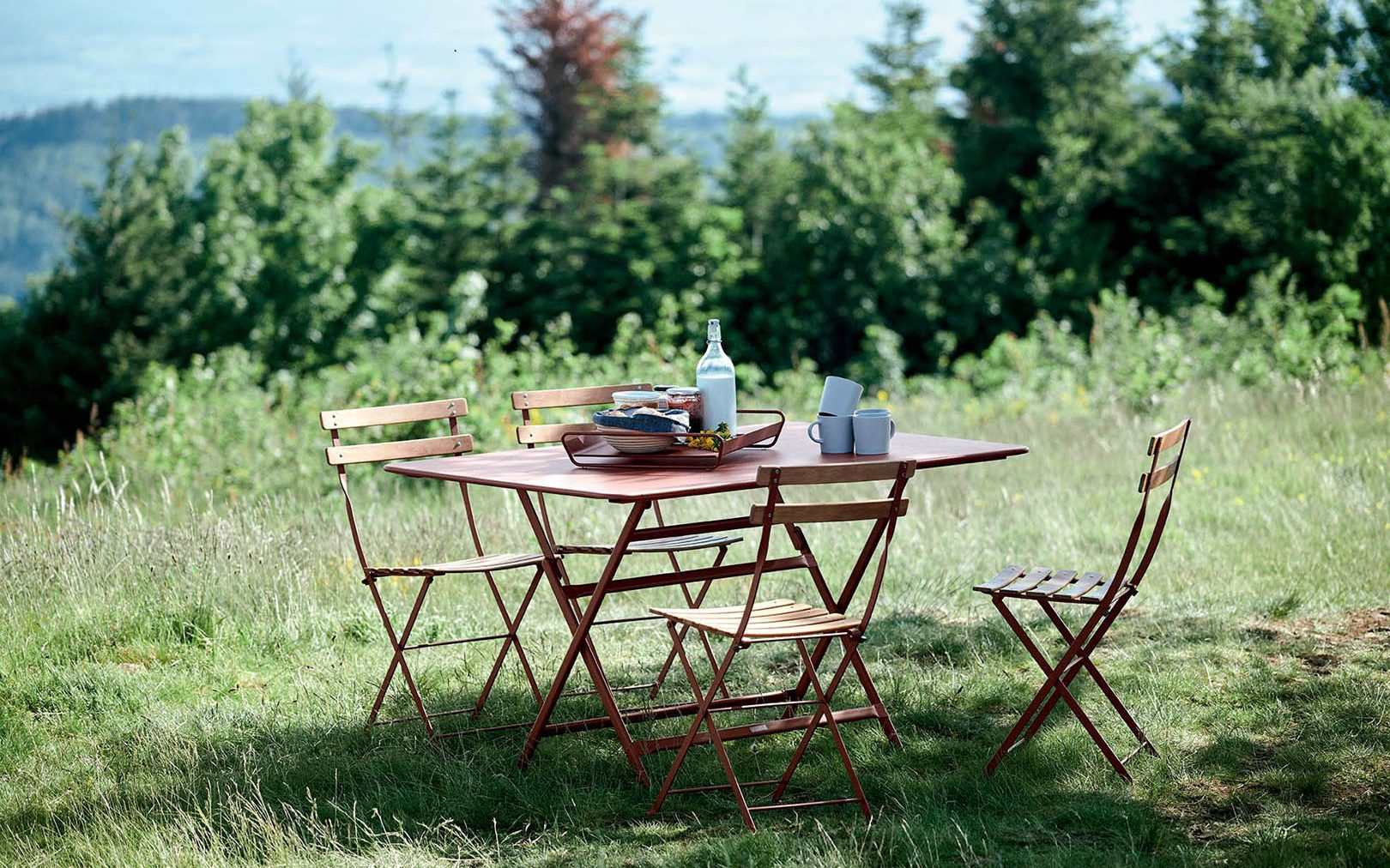
Easiest to Maintain
- Aluminium: Rust-proof and remarkably easy to care for, aluminium furniture only requires occasional cleaning with soap and water. It’s perfect for those seeking hassle-free outdoor furnishings.
- Resin and Plastics: These materials are low maintenance, requiring little more than a washdown to keep them looking fresh. They resist staining, fading, and mildew, making them ideal for busy homeowners.
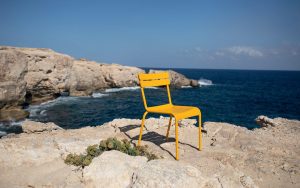
Most Eco-Friendly
- Bamboo: As a rapidly renewable resource, bamboo is an excellent eco-friendly choice. It’s strong, durable, and has a unique aesthetic. However, it’s best suited for covered outdoor areas to protect it from direct exposure to the elements.
- Recycled Plastic: Furniture made from recycled plastics, such as HDPE, offers a sustainable option. It reduces waste in landfills and requires less energy and resources to produce compared to new plastic or metal furnishings.
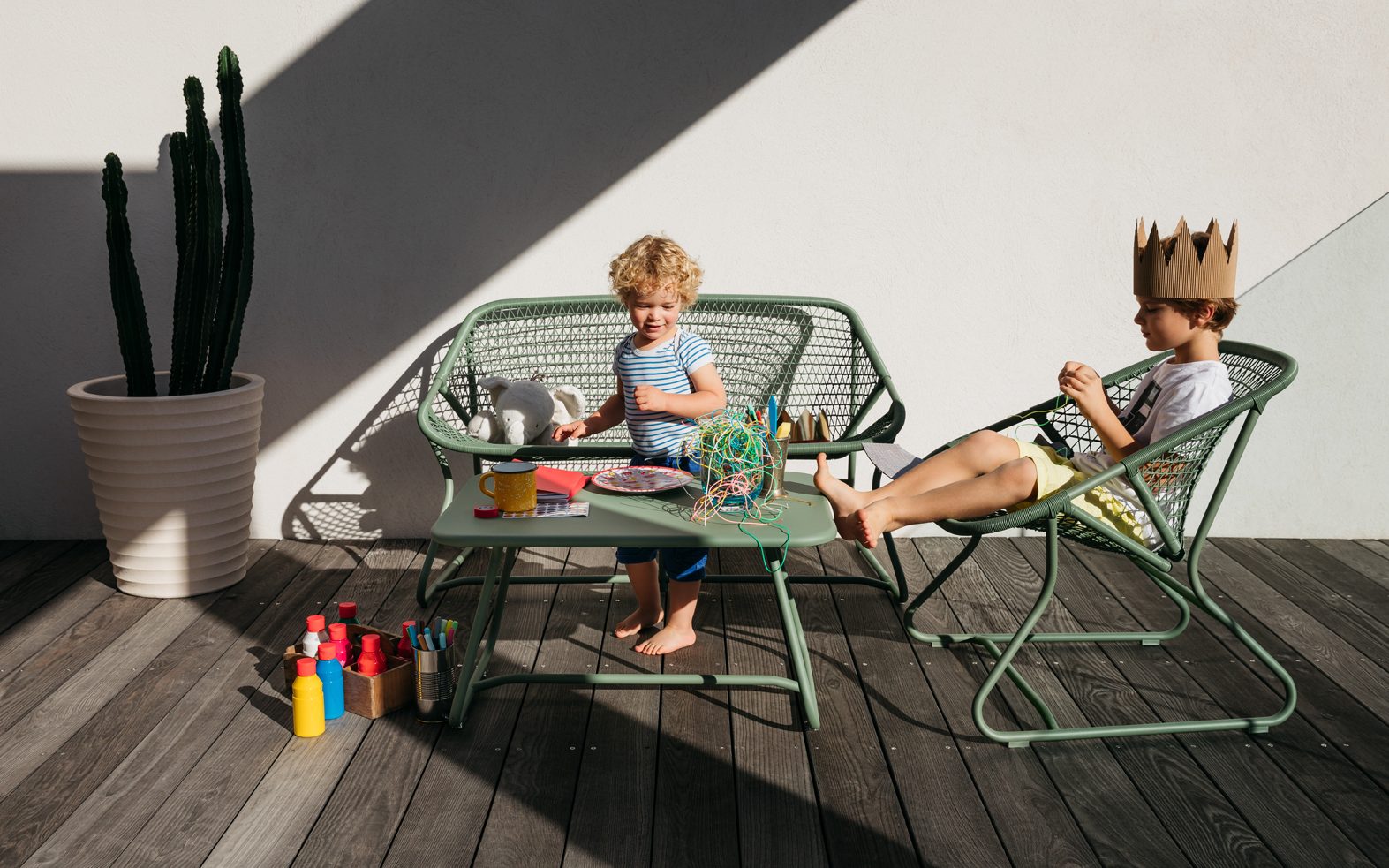
Mixing and Matching Best Outdoor Furniture Materials
- Aesthetic Appeal with Functionality: Combine materials like teak or cedar with aluminium or stainless steel for a balance of natural beauty and modern durability. The wood provides warmth and natural elegance, while metal frames offer structural integrity and ease of maintenance.
- Layer Textures for Depth: Pair smooth, sleek surfaces such as concrete or metal with the textured richness of natural or synthetic wicker. This contrast adds visual interest and depth to your outdoor space.
- Incorporate Fabrics for Comfort: Regardless of your primary furniture material, adding cushions or upholstery in high-performance outdoor fabrics can boost comfort, introduce colour, and allow for easy style updates. Choose fabrics that are water-resistant and UV-protected to complement furniture made from wood, metal, or synthetic materials.
- Sustainability Meets Style: For an eco-friendly outdoor space that doesn’t sacrifice style, pair bamboo or recycled plastic furniture with natural fibre rugs and cushions made from recycled or organic materials. This approach ensures that your outdoor living area is both environmentally responsible and aesthetically pleasing.
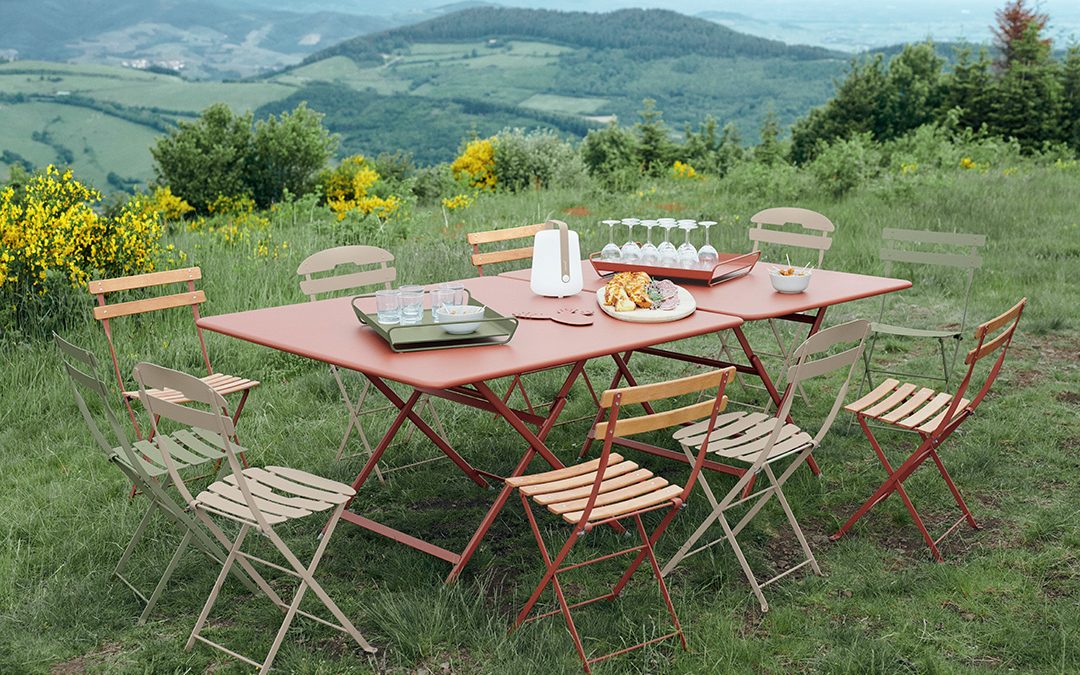
Choosing the Perfect Outdoor Garden Furniture Materials
Choosing the right material for outdoor dining furniture in Melbourne greatly affects enjoyment, functionality, and looks. Each material has unique pros and cons. These range from wood’s natural elegance to metal’s durability and synthetic’s low upkeep. It’s vital to match the material with your needs, preferences, and environment.
Firstly, when selecting the best material for outdoor furniture in Melbourne, adopt a holistic approach. Consider durability, maintenance, comfort, and looks. Perhaps you value teak’s beauty and longevity. Or maybe you prefer aluminium and resin for easy care. Additionally, eco-friendly choices like bamboo and recycled plastics might also appeal. Ultimately, your selection should reflect your lifestyle and outdoor space’s character.
For those still exploring the vast options, consulting with outdoor furniture experts or visiting showrooms can offer valuable insights. Seeing materials firsthand and receiving personalized advice tailored to your specific needs and local climate conditions can smooth and enhance the selection process.
Your outdoor space is a sanctuary and a place for relaxation, entertainment, and enjoyment. Make it even better with the best Air Conditioners in Melbourne. With the right furniture materials, it can serve as a beautiful, comfortable, and resilient extension of your home for years to come.
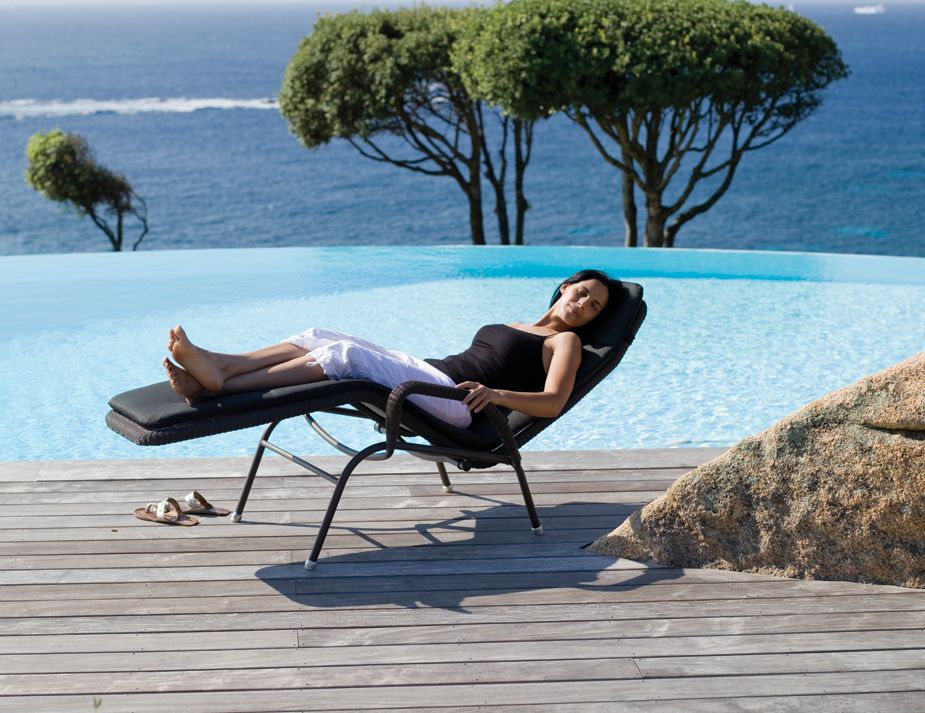
Frequently Asked Questions
Yes, aluminium outdoor furniture is known for its longevity. It’s rust-resistant, lightweight, and durable, capable of lasting many years with minimal maintenance.
Using furniture covers is the cheapest way to protect outdoor furniture. They offer protection from sun, rain, and debris without the need for expensive treatments or materials.
To make outdoor furniture more weather-resistant, apply protective sealants to wood, use furniture covers, and choose materials like teak, aluminium, or synthetic resin that inherently withstand the elements.
Protecting outdoor wood furniture involves applying a waterproof sealant or wood oil annually to guard against moisture, UV rays, and temperature changes, extending its life and maintaining its appearance.
Eucalyptus is an excellent choice for outdoor furniture due to its natural resistance to decay and moisture. Like teak, it requires some maintenance to maintain its appearance but is generally less expensive, offering good durability and aesthetic appeal.
